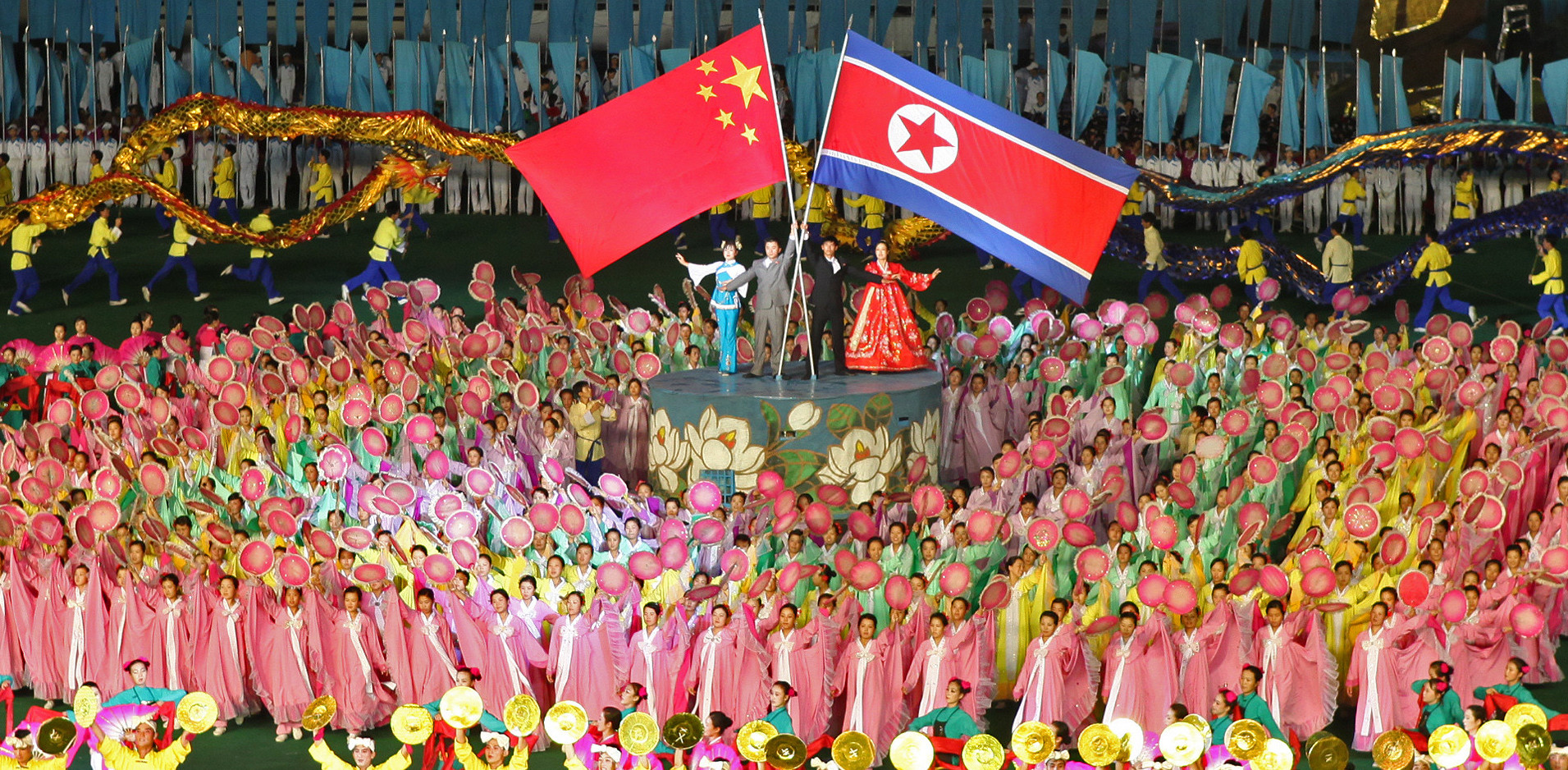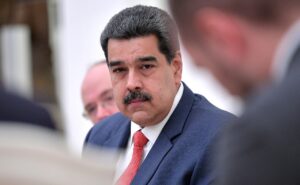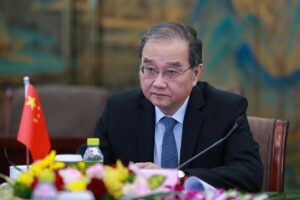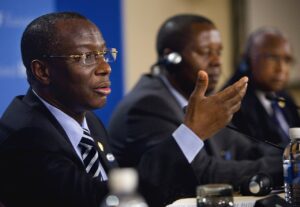The COVID-19 Curveball
The rapid outbreak of the novel coronavirus first reported in China and then across the world forced both China and North Korea to alter their renormalization. Both countries implemented aggressive containment policies early in 2020, though far too late to stop the spread of the disease through travel and trade.
Whether North Korea’s measures were successful is an important question, but one that is difficult to assess. North Korea restricted all travel with China, including tourism, and implemented quarantines for travelers in mid-January. Combined with a public health campaign to mobilize the public, this policy indicates how seriously North Korea took the threat of COVID-19 before any cases were confirmed in the country.1Kee B. Park, Jessup Jong, and Youngwoo Jung. “Do They or Do They Not Have COVID-19 Inside North Korea?” 38North. 23 April 2020. https://www.38north.org/2020/04/kparkjjongyjung042320/. North Korea denies that it has had any cases; however, the continuation of restrictive measures, including citywide lockdowns, indicates that North Korea may be responding to potential cases.2Mitch Shin. “What Is the Truth About COVID-19 in North Korea?” The Diplomat. 6 January 2021. https://thediplomat.com/2021/01/what-is-the-truth-about-covid-19-in-north-korea/.
Particularly concerning for North Korea watchers in 2020 were Kim Jong-un’s absences from the public eye during the pandemic, including a three-week period in April 2020 that raised speculation about his health. By the end of 2020, he had taken weeks-long absences five times.3Colin Zwirko. “Kim Jong Un disappears from the public eye as major North Korean events loom.” NK News. 12 November 2020. https://www.nknews.org/2020/11/kim-jong-un-disappears-from-the-public-eye-as-major-north-korean-events-loom/. Though his rate of absence was higher than in previous years, he had disappeared from public view in the past, which may indicate that his health was not necessarily the issue. Pandemic precautions might have been a reason for his limited public appearances. More urgently, his lack of activity raised the question, once again, of what a succession scenario would look like after Kim.4Choe Sang-Hun. “Kim Jong-un Is Back. What Happens When He’s Really Gone?” The New York Times. 17 June 2020. https://www.nytimes.com/2020/05/02/world/asia/kim-jong-un-alive.html. Transition to a new leader would be difficult, requiring cooperation and buy-in from the military and national security apparatus to restabilize the regime. In the midst of a pandemic, such a transition would be more complex. Kim’s latest reappearance in November 2020 has laid to rest some concerns, but the virulence of COVID-19 variants continues to pose a threat and raise the what-if specter of sudden instability in North Korea.
Despite the denial of cases, North Korea has maintained active outreach and communication with the international community during the pandemic, seeking specific medical equipment or COVID-19 testing supplies from organizations or countries and simply staying in contact with others. In early March, Kim sent a letter to South Korean President Moon Jae-in in support of South Korea’s efforts against the pandemic, to which Moon replied.5“N.K. leader sends letter to Moon to support S. Korea’s fight against coronavirus.” Yonhap News. 5 March 2020. https://en.yna.co.kr/view/AEN20200305008652315. U.S. President Donald Trump also sent Kim a letter offering assistance.6Dasl Yoon and Andrew Restuccia. “Trump Writes to North Korean Leader in Midst of Coronavirus Emergency.” The Wall Street Journal. 22 March 2020. https://www.wsj.com/articles/trump-writes-to-north-korean-leader-in-midst-of-coronavirus-emergency-11584894699. North Korea ultimately refused pandemic assistance from both South Korea and the United States, turning instead to the United Nations and international aid organizations, with sanctions waivers from the UN Security Council.7Oh Take-sung. “UN OKs Sending Anti-Virus Supplies to North Korea.” Voice of America. 27 February 2020. https://www.voanews.com/science-health/coronavirus-outbreak/un-oks-sending-anti-virus-supplies-north-korea. The refusal of certain assistance, even during destructive flooding in August 2020 and ongoing food shortages exacerbating the humanitarian crisis, showed North Korea’s continuing fear of imported COVID-19 cases but also an unwillingness to allow the United States and South Korea to be seen as assisting.8Choe Sang-Hun. “North Korea, Fighting to Hold Back Virus and Floods, Says No Thanks to Outside Aid.” The New York Times. 14 August 2020. https://www.nytimes.com/2020/08/14/world/asia/north-korea-floods-coronavirus.html.
North Korea’s Economic Tailspin
The strictures of the pandemic showed the extent of North Korea’s dependence on China for trade, foreign currency, and aid. Both countries’ pandemic response policies contributed to a severe economic situation in North Korea, causing hardship that years of sanctions had not.
The immediate consequences of the closure of the border was that North Korea’s trade plummeted. Though China is obligated to uphold UN Security Council sanctions on North Korea, in practice Beijing has enforced the sanctions selectively, concerned with the destabilizing effects of sanctions on North Korea’s society. Without the usual volume and frequency of shipments from northeast China, North Korea suffered shortages in goods and raw materials, including fertilizer needed ahead of the growing season, which contributed to a food shortage. Without access to Chinese markets, North Korea also lost an important source of foreign currency, an acute challenge for an economy that is increasingly dollarized in several foreign currencies.9Hyonhee Shin. “North Korea’s economy struggles as sanctions, COVID-19 weigh.” Reuters. 7 January 2021. https://www.reuters.com/article/northkorea-politics-economy/factbox-north-koreas-economy-struggles-as-sanctions-covid-19-weigh-idUSL4N2JI1ED.
In addition to requests for aid from international organizations, Pyongyang’s domestic efforts to shore up the economy included a bond issuance, the first in 17 years, to transfer liquidity from organizations and the entrepreneurial class, or donju, to the government to fund a budget that had a sharp increase in public health expenditures.10Jang Seul Gi. “North Korea has begun issuing public bonds.” Daily NK. 22 April 2020. https://www.dailynk.com/english/north-korea-begun-issuing-public-bonds/.
Yonhap. “N. Korea increases budget for health, construction projects amid anti-virus efforts.” The Korea Herald. 13 April 2020. https://www.koreaherald.com/view.php?ud=20200413000297. Other policies noted by North Korea watchers range from supporting the state’s liquidity through taxes and fees on the public, to finding alternative solutions for lost raw material imports, to attempts at increasing economic output through labor campaign “battles.”11Hyung-jin Kim. “North Korea waging propaganda-heavy, 80-day labor campaign.” AP. 13 November 2020. https://apnews.com/article/international-news-seoul-south-korea-north-korea-coronavirus-pandemic-ffe76e53a73f1879c149cb9954d95e08. However, in August 2020, Kim’s acknowledgment that his five-year economic plan had faltered has provided an opening for reversing some economic reforms: previous liberal policies, from establishing special economic zones to loosening controls on private markets, are vanishing under a re-exertion of state control and the pandemic restrictions.12Josh Smith. “Analysis: North Korea’s market reforms seen at risk as leader Kim tightens grip.” Reuters. 8 January 2021. https://www.reuters.com/article/us-northkorea-economy-analysis/analysis-north-koreas-market-reforms-seen-at-risk-as-leader-kim-tightens-grip-idUSKBN29D0OF.
Choe Sang-Hun. “North Korea’s Leader Had Big Economic Plans. He Admits They’ve Failed.” The New York Times. 19 August 2020. https://www.nytimes.com/2020/08/19/world/asia/north-korea-economy-coronavirus.html.
China’s response to North Korea’s shortages has been consistent with past assistance in the face of disasters. North Korea sent a delegation to Beijing in April 2020 to discuss economic assistance.13“Exclusive: North Korea economic delegation to visit Beijing for food, trade talks – sources.” Reuters. 28 April 2020. https://www.reuters.com/article/us-health-coronavirus-northkorea-china-e-idUSKCN22A1CJ. By November 2020, China had provided more than a million tons combined of food and fertilizer to help North Korea erase its shortfall, despite the border remaining closed to most shipments.14Takeshi Kamiya and Yoshikazu Hirai. “China bailout to North Korea: massive food and fertilizer aid.” The Asahi Shimbun. 3 November 2020. https://www.asahi.com/ajw/articles/13897237. Instead, North Korea seems to have held incoming shipments of aid in quarantine for at least part of the pandemic.15“COVID-19 and North Korea Update – April 20, 2020.” The National Committee on North Korea. 20 April 2020. https://www.ncnk.org/news/covid-19-and-north-korea-update-april-20-2020.
The enforcement of the border closure and the sharp decline in China-DPRK trade during the pandemic provides a snapshot of what more fully enforced sanctions on North Korea would entail. For years, China has not cut off certain areas of trade with North Korea, instead allowing goods to flow by sea and land, tourism, and North Koreans to travel to China for work. Much of that activity has slowed or ceased with pandemic precautions. However, humanitarian assistance, including food aid, is not prohibited by the sanctions.
The current situation in North Korea will probably reinforce China’s perspective on sanctions. Economic hardship has increased significantly for North Korean citizens—only worsened by natural disasters in 2020, including drought in the spring and flooding in the summer—but North Korea has not indicated that it will change its objective of maintaining its nuclear arsenal. North Korea self-imposed the border restrictions in response to the pandemic, essentially prioritizing public health over trade. Domestic North Korean public messaging urging self-reliance and alertness in the face of economic and pandemic turmoil suggests instead that the regime will find ways to survive this period.16Hyung-jin Kim and Tong-hyung Kim. “Kim Jong Un urges North Koreans to keep up virus fight.” 3 July 2020. https://apnews.com/article/c967b50b62f96ba302e3dbba9996f000.
Beijing’s thinking is probably similar. It is unlikely that Beijing will decide sanctions are productive and improve enforcement, given the risks of a weak and destabilized North Korean state. Moreover, with relations with the United States chilly for both China and North Korea, China has little to lose in maintaining the warmer ties it has developed with North Korea in the past couple of years.
Prospects of Progress?
China has had little option but to help maintain the status quo on the Korean peninsula in 2020, as the pandemic reduced the already low likelihood of further North Korea-U.S. talks to nothing and as the United States approached a presidential election.
In recent years, China has enjoyed warming relations with North Korea. Following the particularly tense missiles tests of 2017, Trump’s summit diplomacy prompted regular visits by Kim to China. This afforded Xi the opportunity to dispense advice directly to Kim, even as North Korea secured the bilateral talks with the United States that it preferred to multilateral engagement. The closer personal relations between Xi and Kim gave China some inside perspectives on North Korea’s approach to the talks, as well as the chance to advocate for China’s interests in the progress of the discussions.17Cui Liru. “China, U.S., DPRK: What happened?” China-US Focus. 6 February 2020. https://www.chinausfocus.com/foreign-policy/china-us-dprk-what-happened-. The series of bilateral summits, both with Trump and with Moon, ultimately had very limited substantial results, though the Panmunjom Declaration and the Singapore Declaration may still have some utility in future engagement. This led to a loss of confidence in the summit method, signaled clearly by the resumption of North Korean short-range missile tests after the Hanoi summit. The breakdown in talks has meant that China’s opportunities to influence the developments on the peninsula have been much more limited.
In 2021, as vaccines are distributed and restrictive measures are eventually loosened, China will assess the best path forward under a new set of circumstances. The holding pattern of 2020 will change with the addition of several new variables.
With the Trump administration out of power, China is waiting to measure Biden’s approach to North Korea and how much it may resemble the strategic patience of the Obama era, which is unproductive from China’s perspective in its reliance on sanctions. As of February 2021, the Biden administration is still conducting its strategy review on North Korea, with only a few hints on the new direction. An incremental approach to denuclearization in exchange for sanctions relief is likely, and Secretary of State Antony Blinken has confirmed that the administration will continue to use sanctions to incentivize North Korea to denuclearize. Discussions will likely occur at the working-level—a return to pre-Trump methods of dialogue.18Christy Lee. With significant experience on North Korea in the administration, China may expect to see the development of a new model. Most critical to watch will be what major signal the Biden administration first sends to North Korea, and how North Korea responds. Chinese experts on North Korea hope for a combination of pragmatism and engagement from the Biden administration to move nuclear talks toward a productive stage, including multilateral cooperation.19Wang Fudong. “Room for a Breakthrough with DPRK.” China-US Focus. 18 December 2020. https://www.chinausfocus.com/foreign-policy/room-for-a-breakthrough-with-dprk.
Likewise, Biden’s China policy formulation, especially the ability to compartmentalize various issues on the table, will suggest to China whether there is room to cooperate on North Korea or not. Compartmentalization will be important for China to practice as well, given the escalating tensions over Taiwan, Hong Kong, and other issues in the U.S.-China relationship. China does expect a more conventional and nuanced foreign policy from Biden. As the policy evolves in the early days of the administration, and as the administration’s review of Trump’s policy continues, Biden has indicated that he will continue to take strong stances on China’s economic practices, human rights issues, and assertive regional activities, while acknowledging shared challenges. Those shared issues—including the pandemic, climate change, and weapons proliferation, according to a February 2021 call between Biden and Xi—could be areas for cooperation and serve to ease tension in the relationship.20The White House. “Readout of President Joseph R. Biden, Jr. Call with President Xi Jinping of China.” 10 February 2021. https://www.whitehouse.gov/briefing-room/statements-releases/2021/02/10/readout-of-president-joseph-r-biden-jr-call-with-president-xi-jinping-of-china/.
On the Korean peninsula, North Korea’s short-range missiles will be a continuing source of provocation for neighbors.21“Trump says he is not worried about short-range missiles fired by North Korea.” Reuters. 1 August 2019. https://www.reuters.com/article/us-northkorea-missiles-usa-trump/trump-says-he-is-not-worried-about-short-range-missiles-fired-by-north-korea-idUSKCN1UR5PC. In South Korea, with a party victory for Moon in the April 2020 legislative elections, Moon has one year left before the end of his term to pursue his inter-Korean policy of engagement. However, he will need support from the Biden administration as well as his domestic audience, which will be difficult to maintain in South Korea’s highly polarized political climate.22Hyonhee Shin. “South Korea urges U.S. flexibility on sanctions to restart North Korea talks.” Reuters. 3 February 2021. https://www.reuters.com/article/us-southkorea-northkorea/south-korea-urges-u-s-flexibility-on-sanctions-to-restart-north-korea-talks-idUSKBN2A319F.
Minseon Ku. “What Does South Korean President Moon Want From the Biden Administration?” 38North. 28 January 2021. https://www.38north.org/2021/01/what-does-south-korean-president-moon-want-from-the-biden-administration/. In Japan, the Suga administration has hewed closely to predecessor Abe’s priorities on North Korea: resolving the abduction issue, through talks with North Korean officials or Kim himself if possible, and deterrence of North Korea’s missile threat.23Shim Kyu-seok. “Suga hopes Olympics can build bridge to Pyongyang.” Korea JoongAng Daily. 14 January 2021. https://koreajoongangdaily.joins.com/2021/01/14/national/northKorea/Japan-North-Korea-Yoshihide-Suga/20210114181003991.html.
Chieko Tsuneoka. “Japan Plans Its Own Missiles Able to Hit North Korea.” The Wall Street Journal. 9 December 2020. https://www.wsj.com/articles/japan-plans-its-own-missiles-able-to-hit-north-korea-11607510528.
These forming dynamics could provide opportunities for China to strengthen its relations with North Korea but might well signal a return to North Korea feeling cornered and, as a result, increasing its provocative behavior. A return to the status quo of isolation and lack of negotiations or summits would again push an inter-Korean peace mechanism beyond the horizon, losing any momentum gained over the past few years. And returning to the status quo raises the question of when and how it will eventually break.
Instead, China would prefer to return to dialogues and negotiations, with China in a position to both influence the outcome of negotiations and to work cooperatively with North Korea, the United States, South Korea, and other stakeholders.24Fu Ying. “A Matter of Respect on Korean Peninsula.” China-US Focus. 9 October 2020. https://www.chinausfocus.com/peace-security/a-matter-of-respect-on-korean-peninsula. However, the prospects for a return to multi-party talks depend heavily on progress among China, North Korea, and the United States’ relations with each other.
Swimming Forward
As the Biden administration finalizes its policies, China and North Korea will watch closely to assess opportunities for engagement. China will maintain that its cooperation is essential for the United States to move forward with North Korea. Wherever North Korea sits on the Biden administration’s list of priorities, it remains one of the issues where China and the United States could work together and reduce the turbulence of U.S.-China relations. This ground for cooperation will not translate directly into China’s willingness to cooperate on North Korea with Biden, since China has worked hard, especially during the pandemic, to cultivate a warm and ultimately leverageable relationship with North Korea, while protecting its own interests in the Korean peninsula. Instead, China will look for other areas where the United States might match cooperation for cooperation.
Notes
- 1Kee B. Park, Jessup Jong, and Youngwoo Jung. “Do They or Do They Not Have COVID-19 Inside North Korea?” 38North. 23 April 2020. https://www.38north.org/2020/04/kparkjjongyjung042320/.
- 2Mitch Shin. “What Is the Truth About COVID-19 in North Korea?” The Diplomat. 6 January 2021. https://thediplomat.com/2021/01/what-is-the-truth-about-covid-19-in-north-korea/.
- 3Colin Zwirko. “Kim Jong Un disappears from the public eye as major North Korean events loom.” NK News. 12 November 2020. https://www.nknews.org/2020/11/kim-jong-un-disappears-from-the-public-eye-as-major-north-korean-events-loom/.
- 4Choe Sang-Hun. “Kim Jong-un Is Back. What Happens When He’s Really Gone?” The New York Times. 17 June 2020. https://www.nytimes.com/2020/05/02/world/asia/kim-jong-un-alive.html.
- 5“N.K. leader sends letter to Moon to support S. Korea’s fight against coronavirus.” Yonhap News. 5 March 2020. https://en.yna.co.kr/view/AEN20200305008652315.
- 6Dasl Yoon and Andrew Restuccia. “Trump Writes to North Korean Leader in Midst of Coronavirus Emergency.” The Wall Street Journal. 22 March 2020. https://www.wsj.com/articles/trump-writes-to-north-korean-leader-in-midst-of-coronavirus-emergency-11584894699.
- 7Oh Take-sung. “UN OKs Sending Anti-Virus Supplies to North Korea.” Voice of America. 27 February 2020. https://www.voanews.com/science-health/coronavirus-outbreak/un-oks-sending-anti-virus-supplies-north-korea.
- 8Choe Sang-Hun. “North Korea, Fighting to Hold Back Virus and Floods, Says No Thanks to Outside Aid.” The New York Times. 14 August 2020. https://www.nytimes.com/2020/08/14/world/asia/north-korea-floods-coronavirus.html.
- 9Hyonhee Shin. “North Korea’s economy struggles as sanctions, COVID-19 weigh.” Reuters. 7 January 2021. https://www.reuters.com/article/northkorea-politics-economy/factbox-north-koreas-economy-struggles-as-sanctions-covid-19-weigh-idUSL4N2JI1ED.
- 10Jang Seul Gi. “North Korea has begun issuing public bonds.” Daily NK. 22 April 2020. https://www.dailynk.com/english/north-korea-begun-issuing-public-bonds/.
Yonhap. “N. Korea increases budget for health, construction projects amid anti-virus efforts.” The Korea Herald. 13 April 2020. https://www.koreaherald.com/view.php?ud=20200413000297. - 11Hyung-jin Kim. “North Korea waging propaganda-heavy, 80-day labor campaign.” AP. 13 November 2020. https://apnews.com/article/international-news-seoul-south-korea-north-korea-coronavirus-pandemic-ffe76e53a73f1879c149cb9954d95e08.
- 12Josh Smith. “Analysis: North Korea’s market reforms seen at risk as leader Kim tightens grip.” Reuters. 8 January 2021. https://www.reuters.com/article/us-northkorea-economy-analysis/analysis-north-koreas-market-reforms-seen-at-risk-as-leader-kim-tightens-grip-idUSKBN29D0OF.
Choe Sang-Hun. “North Korea’s Leader Had Big Economic Plans. He Admits They’ve Failed.” The New York Times. 19 August 2020. https://www.nytimes.com/2020/08/19/world/asia/north-korea-economy-coronavirus.html. - 13“Exclusive: North Korea economic delegation to visit Beijing for food, trade talks – sources.” Reuters. 28 April 2020. https://www.reuters.com/article/us-health-coronavirus-northkorea-china-e-idUSKCN22A1CJ.
- 14Takeshi Kamiya and Yoshikazu Hirai. “China bailout to North Korea: massive food and fertilizer aid.” The Asahi Shimbun. 3 November 2020. https://www.asahi.com/ajw/articles/13897237.
- 15“COVID-19 and North Korea Update – April 20, 2020.” The National Committee on North Korea. 20 April 2020. https://www.ncnk.org/news/covid-19-and-north-korea-update-april-20-2020.
- 16Hyung-jin Kim and Tong-hyung Kim. “Kim Jong Un urges North Koreans to keep up virus fight.” 3 July 2020. https://apnews.com/article/c967b50b62f96ba302e3dbba9996f000.
- 17Cui Liru. “China, U.S., DPRK: What happened?” China-US Focus. 6 February 2020. https://www.chinausfocus.com/foreign-policy/china-us-dprk-what-happened-.
- 18Christy Lee.
- 19Wang Fudong. “Room for a Breakthrough with DPRK.” China-US Focus. 18 December 2020. https://www.chinausfocus.com/foreign-policy/room-for-a-breakthrough-with-dprk.
- 20The White House. “Readout of President Joseph R. Biden, Jr. Call with President Xi Jinping of China.” 10 February 2021. https://www.whitehouse.gov/briefing-room/statements-releases/2021/02/10/readout-of-president-joseph-r-biden-jr-call-with-president-xi-jinping-of-china/.
- 21“Trump says he is not worried about short-range missiles fired by North Korea.” Reuters. 1 August 2019. https://www.reuters.com/article/us-northkorea-missiles-usa-trump/trump-says-he-is-not-worried-about-short-range-missiles-fired-by-north-korea-idUSKCN1UR5PC.
- 22Hyonhee Shin. “South Korea urges U.S. flexibility on sanctions to restart North Korea talks.” Reuters. 3 February 2021. https://www.reuters.com/article/us-southkorea-northkorea/south-korea-urges-u-s-flexibility-on-sanctions-to-restart-north-korea-talks-idUSKBN2A319F.
Minseon Ku. “What Does South Korean President Moon Want From the Biden Administration?” 38North. 28 January 2021. https://www.38north.org/2021/01/what-does-south-korean-president-moon-want-from-the-biden-administration/. - 23Shim Kyu-seok. “Suga hopes Olympics can build bridge to Pyongyang.” Korea JoongAng Daily. 14 January 2021. https://koreajoongangdaily.joins.com/2021/01/14/national/northKorea/Japan-North-Korea-Yoshihide-Suga/20210114181003991.html.
Chieko Tsuneoka. “Japan Plans Its Own Missiles Able to Hit North Korea.” The Wall Street Journal. 9 December 2020. https://www.wsj.com/articles/japan-plans-its-own-missiles-able-to-hit-north-korea-11607510528. - 24Fu Ying. “A Matter of Respect on Korean Peninsula.” China-US Focus. 9 October 2020. https://www.chinausfocus.com/peace-security/a-matter-of-respect-on-korean-peninsula.




